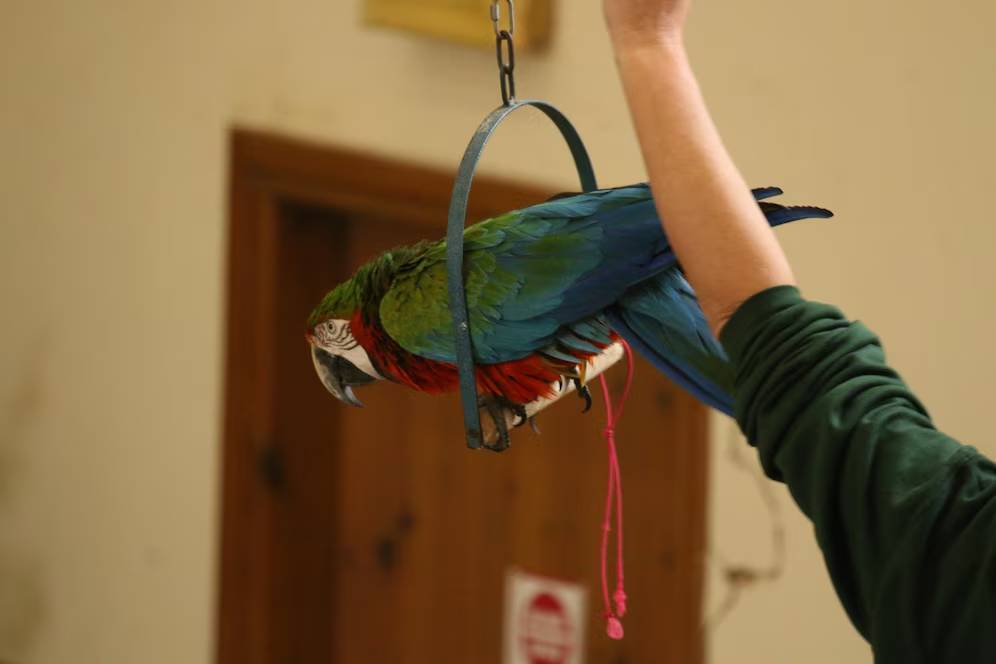
Common Myths About Pet Insurance Debunked
Have you ever caught yourself thinking, “Pet insurance? Isn’t that just a waste of money?” You’re not alone. Despite growing popularity, pet insurance myths continue to swirl around in conversations at the park, vet’s office, and even across social media. Many of these misunderstandings stop pet owners from protecting their furry companions, often until it’s too late.
So, let’s change that.
This blog unpacks the truth about pet insurance, debunking widespread myths with facts, real-life examples, and practical insight. If you’ve ever questioned whether it’s worth insuring your pet, this guide is for you. We’ll help you understand what pet insurance really offers — and where popular assumptions go wrong.
Because when it comes to your pet’s health, being informed is the best policy.
Why Myths About Pet Insurance Matter

In the age of instant information (and misinformation), it’s easy to take what you hear at face value. But myths can cost pet owners dearly, emotionally and financially.
Veterinary treatments have advanced rapidly. Today, pets can receive everything from complex surgeries to chemotherapy. The trade-off? Higher bills. According to the Association of British Insurers, the average claim in the UK topped £800 in recent years. That’s a financial blow many aren’t prepared for.
Understanding the pet insurance facts could be the difference between accessing life-saving treatment and having to make a devastating choice. So, let’s clear the air.
Myth #1: Pet Insurance Is Too Expensive
The Truth:
While premiums vary, pet insurance is more affordable than most people think, especially when compared to unexpected vet bills.
For instance, basic accident-only policies start from as little as £5–£10 a month for cats, and £15–£25 for dogs, depending on breed and age. More comprehensive lifetime policies are pricier but offer wider cover and peace of mind.
Real-Life Scenario:
Lucy’s spaniel, Poppy, developed pancreatitis at age 4. The hospital stay and treatment came to nearly £2,000. Her insurance (around £20 a month) covered 90%, leaving Lucy with just a £200 excess and co-pay. One claim more than justified her annual premium.
Key takeaway: Insurance feels expensive until you actually need it, then it often pays for itself many times over.
Myth #2: It’s Only Worth It for Older Pets
The Truth:
Actually, it’s the opposite. Insuring your pet when they’re young and healthy gives you access to better policies, lower premiums, and coverage for future conditions.
Once a condition is diagnosed, it’s considered pre-existing and is usually excluded from new policies. Starting early means you avoid these gaps in coverage.
Quick Tip: The earlier you insure, the more likely you are to be covered for illnesses that might arise later. Think of it like laying a financial safety net before you even know you’ll need it.
Myth #3: All Policies Cover Everything
The Truth:
Not even close. Pet insurance isn’t one-size-fits-all. There are different types:
- Accident-only: Covers injuries only — not illnesses.
- Time-limited: Covers conditions for a set period (e.g. 12 months).
- Maximum benefit: Pays out up to a fixed amount per condition.
- Lifetime: Covers conditions for the pet’s life, as long as you renew the policy each year.
Each has its own strengths and trade-offs.
Read the fine print. Some policies exclude dental care, pregnancy, behavioural treatments, or specific breeds.
Myth #4: Pre-Existing Conditions Are Always Covered
The Truth:
In almost all cases, they’re not. If your pet has already been diagnosed with a condition, new insurers typically won’t cover treatment related to it. Even switching policies can mean losing cover for ongoing issues.
What You Can Do:
Some insurers (like ManyPets in the UK) now offer pre-existing condition policies, but there are terms, such as a symptom-free period.
Top tip: If your pet has a chronic condition, stick with your current insurer. Changing could result in a hefty out-of-pocket bill.
Myth #5: Making a Claim Is Complicated and Not Worth the Hassle
The Truth:
Modern pet insurers are streamlining their claims process. Many now offer online claims, mobile apps, and direct payments to vets. You can often upload your vet bill and treatment notes within minutes.
A Real-World Example:
When James’s cat fractured a leg, his insurer, Petplan, paid the vet directly within a week. James filled in the form online, and the vet emailed supporting documents. The payout was prompt and smooth.
While experiences vary, choosing a reputable insurer with strong customer reviews can save you stress down the line.
Myth #6: Indoor Pets Don’t Need Insurance

The Truth:
Even if your cat never sets paw outside or your pup lounges all day, accidents and illnesses can still happen. From swallowed toys to unexpected health conditions like diabetes or cancer, no pet is immune.
Examples:
- A housecat develops kidney disease.
- A dog tears a ligament jumping off the sofa.
- A rabbit gets a gastrointestinal blockage — a common but dangerous condition.
Being indoors doesn’t make them invincible.
Myth #7: It’s Better to Save Money Than Pay for Insurance
The Truth:
While saving is smart, it’s risky to rely solely on a “rainy day fund”. What if your pet needs surgery tomorrow and you’ve only saved a few hundred pounds?
Let’s compare:
- Pet insurance: Spreads costs monthly and provides immediate access to large sums when needed.
- Savings: Takes time to build and may fall short in emergencies.
Having both is ideal, but insurance gives you immediate, comprehensive protection.
Myth #8: All Insurers Are the Same
The Truth:
There’s a world of difference between providers. Policies vary widely in:
- What’s covered
- Vet fee limits
- Excess amounts
- Customer service
- Claims turnaround time
Use comparison tools (like MoneySuperMarket or Which?) and always read customer reviews. A lower premium is useless if you struggle to get a claim approved.
Myth #9: You Can’t Change Policies Without Losing Everything
The Truth:
While switching can affect your coverage (especially for existing conditions), you can change providers if your pet is healthy and hasn’t had recent treatments. Some insurers even offer incentives to switch.
However, always consider:
- Waiting periods: Most new policies have a 14-day delay before illness cover begins.
- Exclusions: New insurers won’t cover any conditions your pet has already shown symptoms of.
Do your homework, and don’t cancel your current plan before the new one kicks in.
Myth #10: Pet Insurance Is a Scam

The Truth:
This one’s emotional. It’s usually rooted in someone having a poor experience—a denied claim or a misunderstood policy—but that doesn’t mean the system doesn’t work.
Like any insurance, it’s about managing risk. Most pet owners won’t claim thousands every year, but when something serious happens, that safety net can be priceless.
According to the ABI, UK insurers paid out over £872 million in pet claims in 2021 — a clear sign that many owners are benefiting.
Final Thoughts: Facts Over Fiction
Let’s recap the truth about pet insurance:
- It’s often affordable, especially compared to emergency vet bills
- Early enrolment leads to better coverage.
- Not all policies are created equal — read carefully.
- Claims processes are easier than ever.
- Even the healthiest, indoor pet can face surprise health issues.
The myths may be persistent, but they shouldn’t stop you from protecting your pet’s health — and your finances.
Ready to Take Action?
Still unsure about whether pet insurance is right for you? Here’s what you can do next:
- Compare providers: Use independent sites to assess coverage, not just cost.
- Review your pet’s health needs: Breed-specific risks, age, and lifestyle all matter.
- Ask questions: Speak with your vet or an insurance advisor.
- Choose transparency: Pick an insurer known for clarity and good customer service.
Your pet gives you unconditional love — give them the security they deserve in return.


